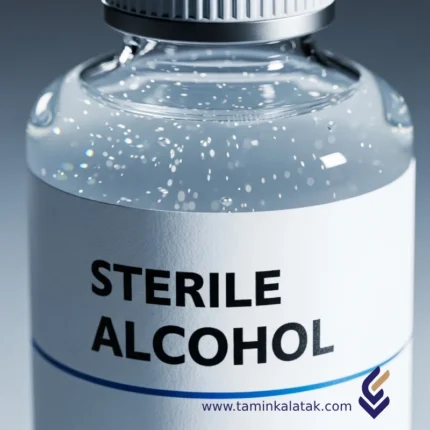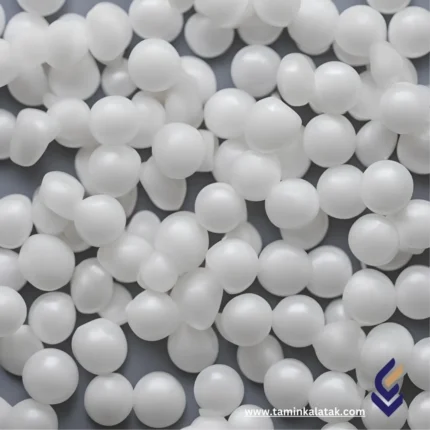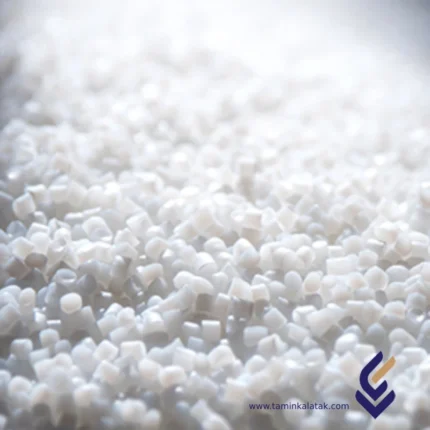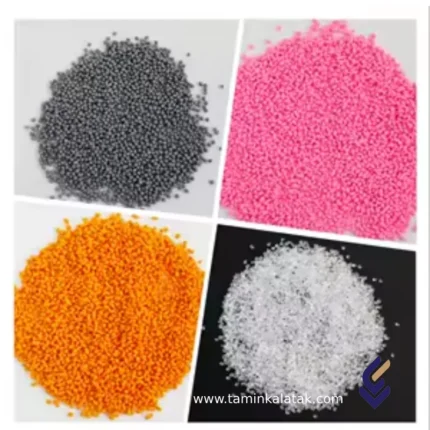Span 80
Stabilizers
Applications of stabilizersStabilizers are used in various industries: Food industry: To increase the shelf life of oils, fats, and products containing vitamin C. Pharmaceutical industry: To increase the shelf life of drugs and maintain their therapeutic properties. Plastics industry: To increase the shelf life of plastic products and improve their resistance to environmental factors. Paint and coating industry: To increase the resistance of paints and coatings to light, heat and moisture. Stabilizer safety
Stearic acid
Stearic Acid Cosmetic Grade
Cosmetic grade stearic acid propertiesEmulsifier: Stearic acid acts as an emulsifier, allowing oily and aqueous substances to mix well. This property has made it one of the main components in the production of lotions, creams and emulsions. Thickener: Stearic acid gives consistency and thickness to cosmetic products and makes their texture creamy and soft. Emollient: This substance helps to soften and smooth the skin and hair and prevents them from drying out. Stabilizing agent: Stearic acid helps stabilize emulsions and prevents the separation of oil and water phases. Dispersing agent: Stearic acid helps evenly disperse pigments and other ingredients in cosmetic products.
Cosmetic Grade Stearic Acid ApplicationsLotion and Cream Production: Stearic acid is used as an emulsifier and thickener in the production of moisturizing lotions and creams. Soap Production: Stearic acid is a major component in the production of solid and liquid soaps. Shampoo and Conditioner Production: Stearic acid is used as an emollient and thickening agent in shampoos and conditioners. Color Cosmetic Production: Stearic acid is used as a dispersing and thickening agent in the production of lipsticks, blushes, eye shadows, and other color cosmetics. Skin Care Products: Stearic acid is used in the production of skin care products such as face masks and serums.
Benefits of Using Cosmetic Grade Stearic AcidSafety: Stearic acid is generally a safe and skin-friendly substance. Natural: Stearic acid is a natural substance obtained from plant and animal sources. Versatile: Stearic acid has numerous properties and is used in the formulation of a variety of cosmetic and health products. Affordable: Stearic acid is a relatively inexpensive substance.
Stearic Acid Rubber Grade
Properties of Rubber Grade Stearic AcidIncrease Tensile Strength: Stearic acid helps increase the tensile strength of rubber, making it more resistant to tearing. Improvement of Abrasion Resistance: Using stearic acid increases the resistance of rubber to abrasion, which is especially important in tires. Reduction of Adhesion: Stearic acid reduces the adhesion of rubber to production equipment and prevents rubber from sticking to molds. Improvement of Electrical Properties: Stearic acid can help improve the electrical properties of rubber, making it suitable for applications that require electrical insulation.
Applications of Rubber Grade Stearic AcidTire Industry: Stearic acid is widely used in the production of tires for cars, trucks, and other vehicles. Rubber Products Industry: In the production of hoses, belts, gaskets and other rubber products Plastics Industry: As a release agent in plastic molding
Benefits of using rubber grade stearic acidImproving the quality of the final product: Stearic acid improves the mechanical, physical and chemical properties of rubber products. Reducing production costs: By increasing the speed and efficiency of the production process, production costs are reduced. Increasing the lifespan of products: Rubber products manufactured using stearic acid have a longer lifespan.
Stearyl alcohol
Stearyl alcohol is a sterilized alcoholic solution, typically based on 70% ethanol or 70% isopropanol, produced under controlled, aseptic conditions to be free from microorganisms and suspended particles.
It is widely recognized as a rapid and effective disinfectant in medical, laboratory, pharmaceutical, and industrial environments.
Chemical Structure of Stearyl alcohol
-
Active Ingredient:
Ethanol (CH₃CH₂OH, CAS No. 64-17-5) or Isopropanol (CH₃CHOHCH₃, CAS No. 67-63-0) -
Carrier:
Sterile distilled water, maintaining a disinfectant concentration of 70–75% (v/v) -
Solution Structure:
A clear, homogeneous, and microbe-free solution capable of penetrating bacterial cell walls during phospholipid disruption -
Optimal Concentration (70%) is used for maximum disinfectant efficacy, enabling effective penetration of microbial proteins and cell membranes.
Physical and Chemical Properties
| Property | Description / Value |
|---|---|
| Appearance | Colorless or slightly tinted liquid with a characteristic alcoholic or mildly aromatic odor |
| Boiling Point | Ethanol: 78.2 °C • Isopropanol: ~82.6 °C |
| Solubility | Completely miscible with water and many organic solvents |
| Flash Point | Low (highly flammable) |
| Sterility | Filtered (e.g., through 0.2 μm membranes) and sometimes gamma-irradiated |
| Microbial Load | None — sterile and particle-free |
Applications of Stearyl alcohol
-
Pre-injection and surgical skin disinfection
-
Disinfection of medical and laboratory equipment surfaces
-
Ingredient in hand sanitizing gels and solutions
-
Sterilization of biomedical and laboratory instruments
-
Surface disinfection in pharmaceutical and vaccine production lines
-
Cleaning and sanitizing cosmetic and medical devices
-
Use in highly controlled industrial or biomedical environments, such as operating rooms and biosafety laboratories (BSL-2/3)
Advantages of Stearyl alcohol
-
Rapid and broad-spectrum disinfection against bacteria, viruses, and fungi
-
Non-corrosive to metals and many sensitive materials
-
No rinsing required after application
-
Suitable for sterile environments, including operating rooms and viral labs
-
Skin-compatible in formulations containing moisturizers or glycerin
-
Fast evaporation leaving no residue on surfaces
Disadvantages and Limitations
-
Highly flammable — requires controlled storage and handling conditions
-
May cause skin dryness with frequent use (if no moisturizer is added)
-
Ineffective against spore-forming bacteria
-
Requires sterile, evaporation-resistant packaging for preservation
Strontium carbonate
Styrene AcryloNitrile resin (SAN)
styrene acrylonitrile structureStyrene acrylonitrile resin (SAN) is a copolymer plastic consisting of styrene and acrylonitrile. The typical composition of SAN polymers is:
- Styrene: ~70–80%
- Acrylonitrile: ~20–30%
styrene acrylonitrile resin propertiesSAN is similar in use to polystyrene. Like polystyrene itself, it is transparent and brittle. The copolymer has a glass transition temperature greater than 100 °C owing to the acrylonitrile units in the chain, thus making the material resistant to boiling water. SAN is known for its excellent tensile and flexural strength, which makes it suitable for structural applications. It resists oils, fats, dilute acids, and alkalis, making it suitable for use in chemical containers and food storage.
styrene acrylonitrile applicationsHousehold Products: Plastic tumblers, food trays, storage containers Automotive: Interior components, knobs, handles, instrument panels Medical: Test tubes, Petri dishes, laboratory equipment Electronics: Housings, enclosures, transparent electronic parts
Advantages
- High Mechanical Strength
- Ease of Processing
- Lightweight
- Cost-Effective
- Transparency
- Good Electrical Insulation
Disadvantages
- Limited Impact Strength
- Environmental Stress Cracking
- Flammability
- Limited Weatherability
Styrene monomer
Styrenic Block Copolymers (TPS)
StructureStyrenic block copolymers (TPS) have a phase-separated structure composed of alternating hard and soft polymer segments. The hard segments consist of polystyrene (PS) domains, which provide strength, rigidity, and thermal stability, while the soft segments are made of elastomeric materials such as polybutadiene (PB), polyisoprene (PI), or ethylene-butylene (EB), contributing to flexibility and elasticity. These block copolymers form a physical crosslinking network where the polystyrene blocks aggregate into discrete domains, acting as physical anchors that hold the material together, while the rubbery segments remain continuous and provide elasticity. This unique morphology allows TPS materials to behave like thermoset elastomers at room temperature but soften and flow when heated, making them fully thermoplastic and easily reprocessable. The phase separation between the polystyrene and elastomeric segments gives TPS its characteristic combination of strength, flexibility, and processability, making it widely used in applications requiring both durability and soft-touch properties.
PropertiesStyrenic block copolymers (TPS) exhibit a unique combination of elasticity, strength, and processability due to their phase-separated structure. They have excellent flexibility and rubber-like elasticity, allowing them to stretch and recover their shape without permanent deformation. Their mechanical properties include good tensile strength and impact resistance, making them durable for various applications. TPS materials have moderate heat resistance, generally performing well below 100°C, and are resistant to many oils, greases, and chemicals, enhancing their stability in demanding environments. They also have good adhesion properties, making them suitable for overmolding onto other plastics. Unlike thermoset rubbers, TPS materials are thermoplastic, meaning they can be melted, reshaped, and recycled multiple times, improving manufacturing efficiency and sustainability. They also provide a soft-touch feel, making them ideal for grips, handles, and other ergonomic applications. Additionally, TPS offers good weather resistance, especially in formulations like SEBS, which enhance UV and oxidation stability. These combined properties make TPS widely used in automotive, medical, consumer goods, and adhesive applications.
Application
- Automotive Industry:
- Soft-touch interior components (dashboards, door panels)
- Seals, gaskets, and vibration dampeners
- Grip pads and protective coatings
- Consumer Goods:
- Handles and grips for tools, toothbrushes, and razors
- Sports equipment, shoe soles, and protective gear
- Flexible packaging and stretchable films
- Medical Applications:
- Medical tubing and syringe plungers
- Overmolded soft-touch medical devices
- Flexible, biocompatible components
- Adhesives and Sealants:
- Pressure-sensitive adhesives (PSAs)
- Hot-melt adhesives for packaging and footwear
- Electronics & Electrical:
- Protective casings for devices
- Wire and cable insulation
AdvantagesHigh Elasticity and Flexibility – Provides rubber-like stretch and softness Good Impact and Tensile Strength – Enhances durability and wear resistance Thermoplastic Nature – Can be easily melted, reshaped, and recycled Soft-Touch Feel – Ideal for ergonomic grips and overmolding Good Adhesion to Various Materials – Suitable for multi-material applications Resistant to Oils, Greases, and Chemicals – Performs well in harsh environments Lightweight – Reduces material costs and improves energy efficiency Good Weather and UV Resistance – Certain formulations (e.g., SEBS) have enhanced outdoor durability Easy Processing – Compatible with injection molding, extrusion, and blow molding
DisadvantagesLower Heat Resistance – Limited performance above 100°C Lower Stiffness Compared to Some Plastics – May require reinforcement for structural applications Can Become Sticky in Hot Conditions – Some grades may soften and lose shape retention Higher Cost Than Standard Plastics – More expensive than traditional polyolefins like PP and PE Limited Load-Bearing Capacity – Not suitable for heavy-duty mechanical applications
Sulfates
Properties of SulfatesHigh solubility: Many sulfates dissolve well in water. Thermal stability: Some sulfates are stable to heat. Oxidizing properties: Some sulfates, such as copper sulfate, have oxidizing properties.
Applications of sulfatesSulfates are widely used in various industries due to their diverse properties, including: Chemical industries: Production of sulfuric acid, dyes, detergents, and chemical fertilizers. Construction industries: Production of cement, gypsum, and other building materials. Paper industry: As a filler and sizing agent in paper production. Textile industry: In the dyeing and printing process of fabrics. Agriculture: As a fertilizer and pesticide. Pharmaceutical industry: In the production of some drugs.












